Understanding Penyakit Kawasaki :- Symptoms, Causes, Diagnosis, Treatment, and Prevention.
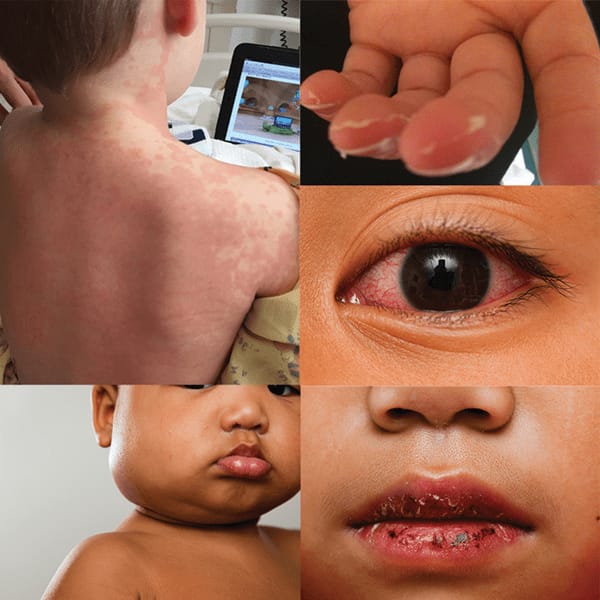
Introduction :-
In recent years, the medical community has witnessed a rise in cases of Kawasaki disease, a relatively rare but potentially serious condition that primarily affects children. In this guide, we delve into the intricacies of penyakit Kawasaki, exploring its symptoms, causes, diagnosis, treatment options, and preventive measures. By understanding this condition thoroughly, we can better equip ourselves to recognize its signs, seek prompt medical attention, and ultimately improve outcomes for those affected.
Table of Contents
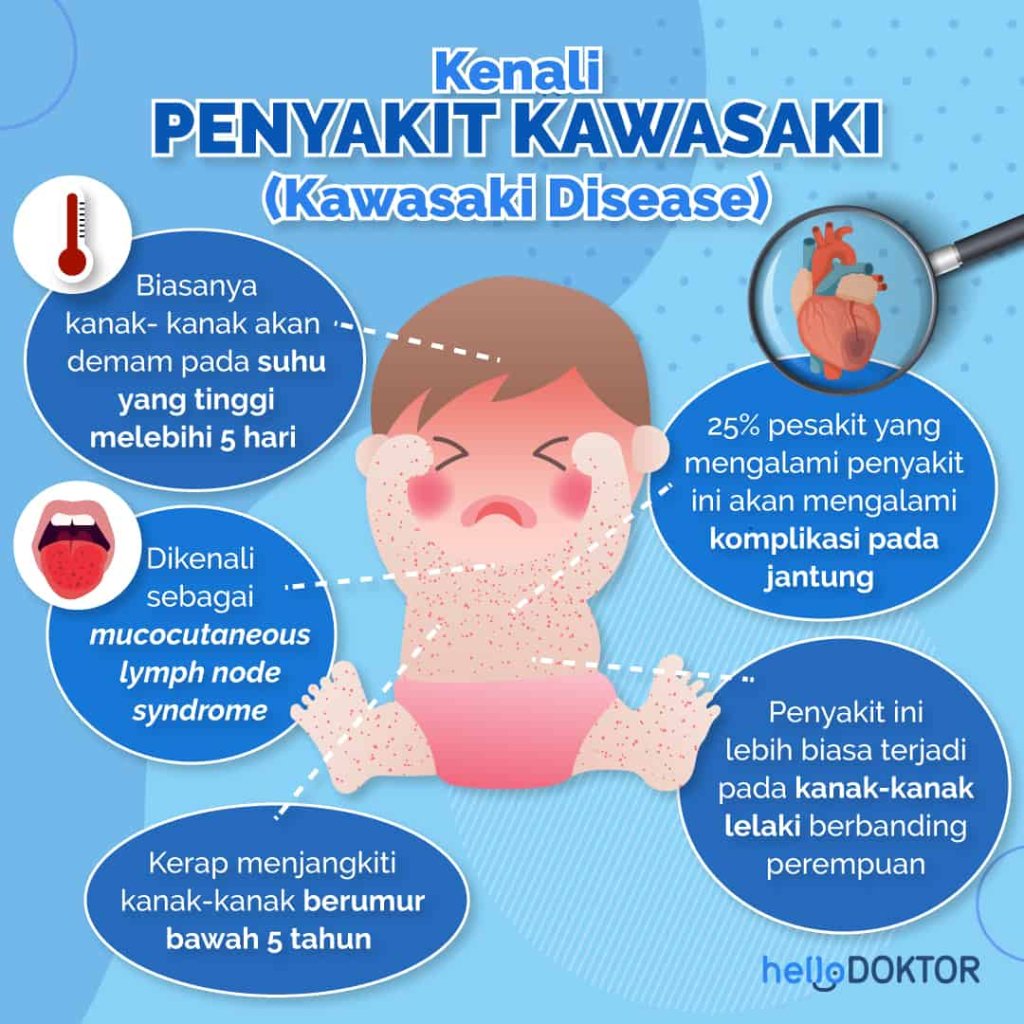
1} What is Penyakit Kawasaki?
Penyakit Kawasaki, also known as Kawasaki disease or mucocutaneous lymph node syndrome, is a rare but serious autoimmune illness primarily affecting children under the age of five. Named after Dr. Tomisaku Kawasaki, who first described it in 1967, the disease predominantly targets the blood vessels throughout the body, particularly the coronary arteries that supply blood to the heart.
Kawasaki disease is characterized by acute inflammation of the blood vessels, leading to a range of symptoms, including persistent high fever, rash, redness of the eyes (conjunctivitis), swelling of the lymph nodes, redness and swelling of the hands and feet, and irritation of the mouth, lips, and throat. While the exact cause of Kawasaki disease remains as unknown, it is believed to involves a combination of genetic predisposition, viral or bacterial infections, and abnormal immune responses.
Kawasaki disease manifests as acute inflammation of the blood vessels, leading to a diverse array of symptoms. These may include persistent high fever, a distinctive rash spreading from the trunk to the limbs, conjunctivitis causing redness and irritation of the eyes, swollen lymph nodes, redness and swelling of the extremities, and mucosal irritation in the mouth, lips, and throat. While the exact etiology of Kawasaki disease remains elusive, it is believed to involve a combination of genetic predisposition, infectious triggers, and aberrant immune responses.

2} Symptoms of Penyakit Kawasaki :-
Recognizing the symptoms of Kawasaki disease is crucial for early diagnosis and treatment. The most common signs and symptoms include :-
- Prolonged High Fever :- Persistent fever lasting for five days or more is often the initial symptom of Kawasaki disease.
- Rash :- A widespread rash may appear, typically starting in the trunk and spreading to the limbs.
- Conjunctivitis :- Redness and inflammation of the eyes, commonly referred to as “pink eye” or conjunctivitis, can occur.
- Swollen Lymph Nodes :- Enlarged lymph nodes, particularly in the neck area, are a common feature of Kawasaki disease.
- Redness and Swelling of Hands and Feet :- The hands and feet may become red, swollen, and painful, with a characteristic peeling of the skin in later stages.
- Irritation of the Mouth and Throat :- The mucous membranes of the mouth, lips, and throat may become red, swollen, and sore, often accompanied by a “strawberry tongue” appearance.
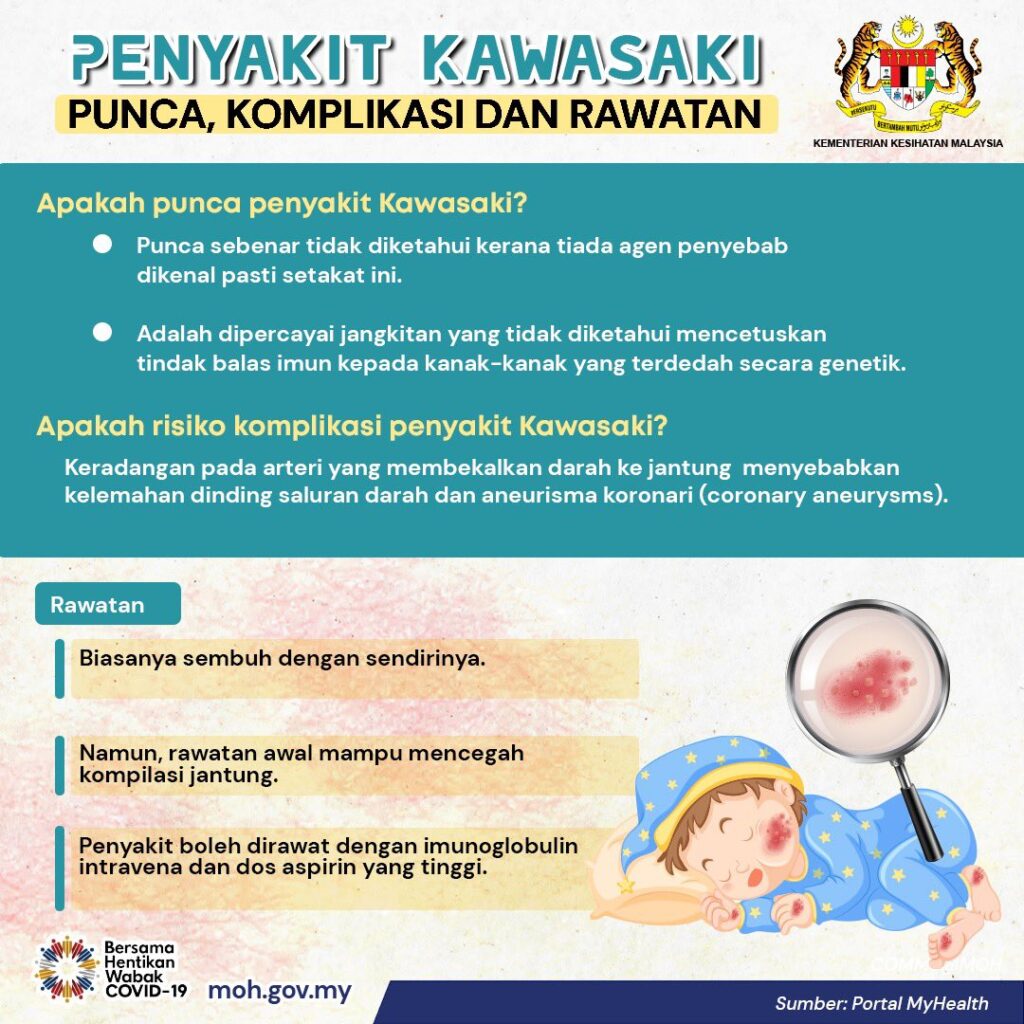
3} Causes and Risk Factors :-
The exact cause of Kawasaki disease remains elusive, but several factors are believed to contribute to its development :-
- Genetic Predisposition :- Certain genetic factors may increase susceptibility to Kawasaki disease, as it tends to cluster in families.
- Infectious Triggers :- While no specific pathogen has been identified as the sole cause of Kawasaki disease, various viral and bacterial infections have been implicated as potential triggers.
- Abnormal Immune Response :- Kawasaki disease is thought to involve an abnormal immune response, leading to widespread inflammation of the blood vessels.

4} Diagnosisn :-
Diagnosing Kawasaki disease can be challenging due to its variable presentation and lack of specific diagnostic tests. Healthcare providers typically rely on a combination of clinical criteria, including :-
- Fever Duration :- A persistent fever lasting five days or more is a hallmark feature of Kawasaki disease.
- Physical Examination :- Characteristic signs such as rash, conjunctivitis, swollen lymph nodes, and changes in the extremities are assessed during a physical exam.
- Laboratory Tests :- Blood tests may reveal elevated markers of inflammation and other nonspecific findings.
- Imaging Studies :- Echocardiography may be performed to assess cardiac involvement and detect any coronary artery abnormalities.

5} Treatment Options :-
Prompt treatment is essential to reduce the risk of complications associated with Kawasaki disease. The primary treatment modalities include :-
- Intravenous Immunoglobulin (IVIG) :- Administration of IVIG is the cornerstone of treatment, helping to reduce inflammation and prevent coronary artery abnormalities.
- High-Dose Aspirin :- Aspirin therapy is often initiated to reduce fever and inflammation, although its use may vary depending on individual circumstances.
- Additional Medications :- In some cases, corticosteroids or other immunosuppressive medications may be prescribed to manage severe or refractory cases of Kawasaki disease.
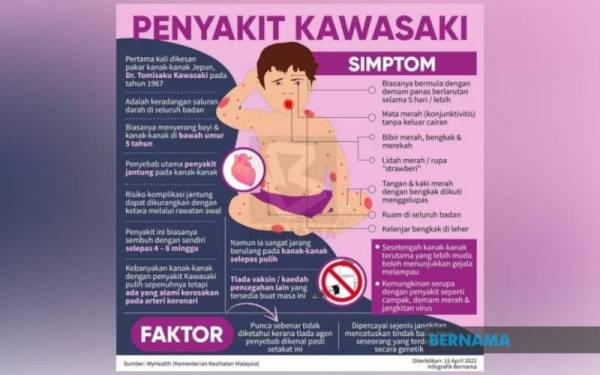
6} Potential Complications :-
While most children with Kawasaki disease recover fully with timely treatment, there is a risk of complications, particularly if the condition is left untreated or if there are delays in diagnosis and management. Potential complications include :-
- Coronary Artery Abnormalities :- The most significant long-term complication of Kawasaki disease is the development of coronary artery abnormalities, including aneurysms, stenosis, and thrombosis.
- Myocarditis :- Inflammation of the heart muscle (myocarditis) can occur, leading to impaired cardiac function and potential heart failure.
- Valvular Abnormalities :- Damage to the heart valves may occur, resulting in regurgitation or stenosis.
- Aneurysms :- Weakened or bulging areas of the blood vessels, known as aneurysms, may develop, increasing the risk of blood clots and other complications.
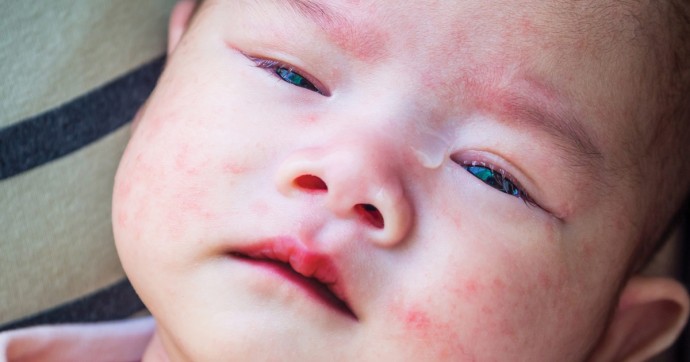
7} Long-Term Outlook :-
With timely diagnosis and appropriate treatment, the prognosis for children with Kawasaki disease is generally favorable. Most children recover fully without significant long-term complications. However, ongoing monitoring and follow-up care are essential to assess cardiac function, detect any potential complications, and ensure optimal long-term outcomes.
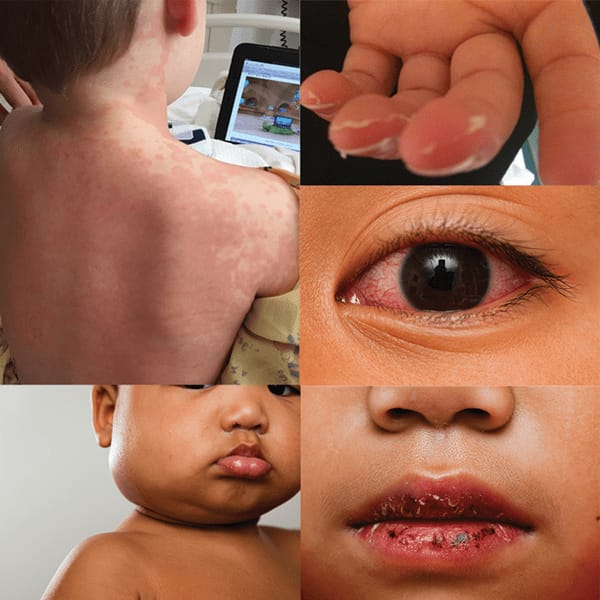
8} Prevention Strategies :-
While it may not be possible to prevent Kawasaki disease entirely, several strategies can help reduce the risk of infection and minimize the impact of the condition :-
- Good Hand Hygiene :- Encourage regular handwashing with soap and water to prevent the spread of infections.
- Avoid Close Contact :- Limit exposure to individuals who are sick, especially during outbreaks of respiratory or viral illnesses.
- Vaccinations :- Ensure that children are up to date with recommended vaccinations, as certain infections may trigger Kawasaki disease.
- Prompt Medical Attention :- Seek medical attention promptly if your child develops symptoms suggestive of Kawasaki disease, particularly persistent fever and other characteristic signs.
9} Research and Future Directions :-
Despite significant progress in understanding Kawasaki disease, many questions remain unanswered, and ongoing research efforts aim to address key gaps in knowledge. Areas of focus include :-
- Etiology :- Investigating the underlying causes and triggers of Kawasaki disease.
- Treatment Optimization :- Identifying more effective treatment strategies to improve outcomes and reduce the risk of complications.
- Prevention :- Exploring potential preventive measures, including vaccines and immune-modulating therapies.
Links :- https://www.mayoclinic.org/diseases-conditions/kawasaki-disease/symptoms-causes/syc-20354598
Conclusion :-
Penyakit Kawasaki is a complex autoimmune condition that requires prompt recognition, diagnosis, and treatment. By understanding the symptoms, causes, diagnosis, treatment options, and preventive measures outlined in this guide, individuals and healthcare providers can work together to improve outcomes and support those affected by this challenging disease.
In conclusion, understanding penyakit Kawasaki is essential for recognizing its symptoms, facilitating prompt diagnosis, and initiating timely treatment. This comprehensive guide has explored the intricacies of this autoimmune condition, shedding light on its diverse manifestations, potential complications, and therapeutic interventions.
Penyakit Kawasaki, although rare, can have significant implications for affected children and their families. Early identification of symptoms, including prolonged fever, rash, conjunctivitis, lymphadenopathy, and mucocutaneous changes, is paramount. Healthcare providers must maintain a high index of suspicion, particularly in children under the age of five, to ensure timely diagnosis and intervention.
While the exact cause of Kawasaki disease remains elusive, ongoing research endeavors continue to unravel its underlying pathophysiology. Genetic predisposition, infectious triggers, and immune dysregulation are among the factors implicated in disease development. Further elucidating these mechanisms holds promise for advancing diagnostic modalities, refining treatment strategies, and ultimately improving patient outcomes.
Treatment of Kawasaki disease typically involves intravenous immunoglobulin (IVIG) therapy, high-dose aspirin, and supportive measures. Early initiation of therapy is critical in mitigating the risk of coronary artery abnormalities and other complications. Close monitoring and follow-up care are essential to assess cardiac function, detect potential sequelae, and ensure optimal long-term outcomes.
Preventive strategies, including good hand hygiene, vaccination adherence, and prompt medical attention for concerning symptoms, play a pivotal role in minimizing the impact of Kawasaki disease. By raising awareness, fostering collaboration among healthcare providers, and empowering patients and caregivers with knowledge, we can strive towards better management and mitigation of this challenging condition.

In closing, this guide aims to serve as a valuable resource for individuals seeking information about penyakit Kawasaki. By disseminating accurate and comprehensive information, we endeavor to enhance awareness, facilitate early diagnosis, and ultimately improve outcomes for those affected by this complex autoimmune disease. Together, we can continue to advance our understanding of Kawasaki disease and work towards bettering the lives of affected children worldwide.
In summary,
Delving into the intricacies of penyakit Kawasaki is crucial for comprehending its nuances, addressing its challenges, and advocating for effective management strategies. This exhaustive exploration has traversed the landscape of this autoimmune phenomenon, unraveling its diverse clinical manifestations, potential complications, and therapeutic approaches.
Penyakit Kawasaki, despite its rarity, presents significant implications for affected individuals and their families. Recognizing the hallmark symptoms—prolonged fever, characteristic rash, ocular inflammation, lymph node enlargement, and mucocutaneous involvement—is paramount for timely diagnosis and intervention. Heightened clinical suspicion and judicious diagnostic evaluation are pivotal in navigating the diagnostic odyssey.
While the etiology of Kawasaki disease remains elusive, ongoing research endeavors strive to decode its enigmatic underpinnings. Genetic predispositions, environmental triggers, and dysregulated immune responses feature prominently in current hypotheses. Advancements in deciphering these complex interplays hold promise for refining diagnostic algorithms, elucidating novel therapeutic targets, and ultimately enhancing patient outcomes.
Managing Kawasaki disease necessitates a multifaceted approach, integrating pharmacological interventions, supportive care measures, and vigilant surveillance. Intravenous immunoglobulin (IVIG) infusions, high-dose aspirin regimens, and adjunctive therapies constitute the cornerstone of treatment. Early initiation of therapy is paramount in forestalling coronary complications and mitigating long-term sequelae.
Preventive strategies play a pivotal role in mitigating the burden of Kawasaki disease, emphasizing vaccination adherence, vigilant symptom surveillance, and prompt medical intervention. Equipping healthcare professionals, educators, and caregivers with knowledge and resources is instrumental in fostering timely recognition and intervention.
In conclusion, this comprehensive elucidation serves as a beacon of understanding, shedding light on the intricacies of penyakit Kawasaki. By fostering awareness, promoting collaboration, and advocating for optimal care practices, we endeavor to enhance outcomes and alleviate the burden of this complex autoimmune phenomenon. Together, we can navigate the challenges posed by Kawasaki disease and pave the path towards improved quality of life for affected individuals and their families.
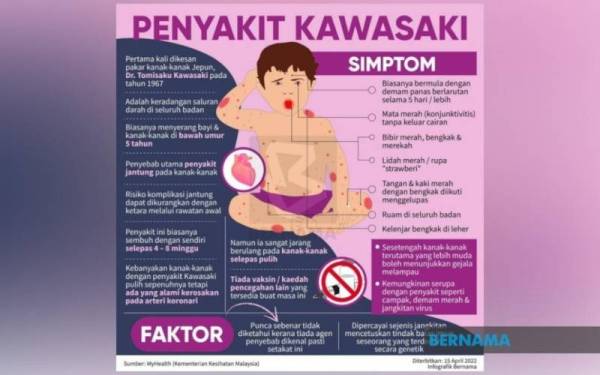
In essence, navigating the intricacies of penyakit Kawasaki is essential for grasping its complexities, addressing its impact, and devising effective management strategies. This exhaustive examination has traversed the landscape of this autoimmune anomaly, uncovering its diverse clinical presentations, potential ramifications, and therapeutic modalities.
Penyakit Kawasaki, though infrequent, carries significant implications for affected individuals and their families. Early recognition of hallmark symptoms—persistent fever, characteristic rash, ocular inflammation, lymph node enlargement, and mucocutaneous involvement—is pivotal for prompt diagnosis and intervention. A heightened index of suspicion and thorough diagnostic evaluation are indispensable in navigating the diagnostic maze.
While the exact etiology of Kawasaki disease remains elusive, ongoing research endeavors strive to unravel its enigmatic origins. Genetic predispositions, environmental triggers, and immune dysregulation feature prominently in current hypotheses. Advancements in unraveling these intricate mechanisms hold promise for refining diagnostic algorithms, elucidating novel therapeutic targets, and ultimately enhancing patient outcomes.
Managing Kawasaki disease necessitates a holistic approach, encompassing pharmacological interventions, supportive measures, and vigilant monitoring. Intravenous immunoglobulin (IVIG) infusions, high-dose aspirin regimens, and adjunctive therapies form the cornerstone of treatment. Timely initiation of therapy is paramount in mitigating coronary complications and averting long-term sequelae.
Preventive strategies play a pivotal role in alleviating the burden of Kawasaki disease, emphasizing vaccination adherence, vigilant symptom monitoring, and prompt medical intervention. Equipping healthcare professionals, educators, and caregivers with knowledge and resources is instrumental in fostering timely recognition and intervention.
In conclusion, this comprehensive exploration serves as a beacon of enlightenment, illuminating the intricacies of penyakit Kawasaki. By fostering awareness, encouraging collaboration, and advocating for optimal care practices, we endeavor to improve outcomes and alleviate the burden of this intricate autoimmune phenomenon. Together, we can navigate the challenges posed by Kawasaki disease and pave the path towards enhanced quality of life for affected individuals and their families.
